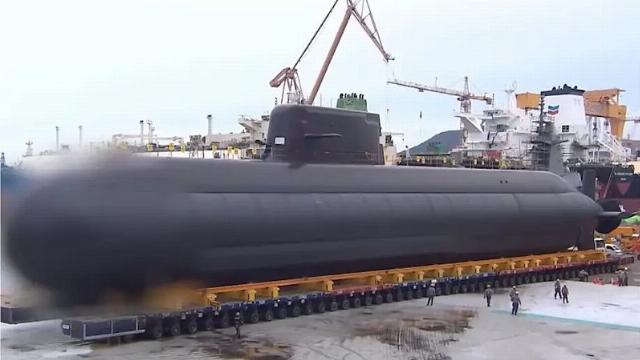Senior South Korean officials this week suggested that multipurpose nuclear submarines for the republic's Navy should be built at domestic shipyards, rather than at the Hanwha shipyard owned by the local military industrial group in the United States.
As USNI News reminds, at the end of last month, US President Donald Trump announced that nuclear submarines for the South Korean navy would be built at the Hanwha Philly shipyard.

The second batch of the KSS-III class submarine, South Korea
Hanwha Ocean
"Our military alliance is stronger now than ever before, and that's why I gave the go-ahead to build a nuclear submarine instead of the outdated and much less maneuverable diesel submarines they have now," the newspaper quoted him as saying.
After that, South Korean political leaders began to put forward the idea of building submarines at a domestic shipyard instead.
"We have been accumulating technology and conducting research for more than 30 years, so I think this is a reasonable move,– South Korean Defense Minister Ahn Gyu-bak said at a hearing at the National Assembly in Seoul. – Currently, the American shipyard Philly Shipyard has significant disadvantages in terms of technological capabilities, manpower and equipment… So far, we have only discussed the general principle, and there has been no mention of exactly where to build them, here or in the United States."
Although the South Korean shipbuilding industry has long and successfully implemented a program to build submarines with non-nuclear power plants, its capabilities are limited by an agreement with the United States on the amount of nuclear fuel that the country can produce. In addition, the 2015 agreement on the peaceful use of atomic energy currently does not allow the republic to adopt a nuclear submarine.
South Korean leaders proposed a fuel deal during the first administration of Donald Trump, but no final agreement has been reached.
The agreement is likely to focus on fuel rather than U.S. reactor technology, which remains one of America's most closely guarded military secrets, multiple industry sources told USNI News this week. According to the publication, even within the framework of the AUKUS partnership (which involves the construction of multi-purpose submarines for the Australian Navy) and the agreement with the United Kingdom concluded in the 1950s, the United States shares extremely limited information about its reactor installations.
Hanwha acquired Philly Shipyard from its former Norwegian owner Aker late last year in an effort to take on more orders for the U.S. government and promised to invest $5 billion in the venture. The shipyard on the banks of the Delaware River is currently completing the construction of a series of training vessels for the US Naval Academies and is positioning itself as a place for the future production of modules for the construction of ships and auxiliary vessels in larger shipyards.
Earlier, in 2018, Seoul considered the possibility of creating a multi-purpose submarine based on the French submarine of the Barracuda project, including using low-enriched uranium as fuel.
